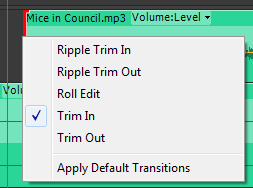

- Adobe premiere transition pops how to#
- Adobe premiere transition pops manual#
- Adobe premiere transition pops pro#
Lastly, check the box next to Repeat Edge Pixels to let the effect cover the edges of the footage as well.Ģ5. And finally, move back to 00 00 01 16.Ģ4.

Click the stopwatch next to Green Blurriness.Ģ1.

Click the stopwatch next to Red Blurriness.ġ7. Scroll down to Channel Blur in the RGB Transition 1.ġ6. Once more, move the Playhead to 00 00 03 07.ġ5. Change the (RGB) White Input Levels to 0.ġ4. In the (RGB) White Input Levels, click the stopwatch symbol. In the top left there should be an Effects panel.ġ1. And of course, click and drag Channel Blur onto RGB Transition 2.ĩ. Click and drag Channel Blur onto RGB Transition 1.ħ. Click and drag Levels onto RGB Transition 2.Ħ. Click and drag the name Levels that show up onto RGB Transition 1.Ĥ. Go over to the Effects panel on the left.ģ. We have our two Nested Sequences! Onto applying the effects. Name the new sequence RGB Transition 2.Ģ5. Press V to activate the Selection tool.Ģ4. Click on the footage where the Playhead intersects it for the last piece.Ģ0. Now let’s Shift-right arrow key six times to go to 00 00 06 06.ġ8. Click on the intersection of the Playhead and the footage to slice it.ġ7. Shift-left arrow key to move the Playhead three times to 00 00 05 01.ġ6. Now let’s move the Playhead to 00 00 5 16.ġ4. Name your new sequence RBG Transition 1.ġ3. This will take both footage clips and combine them in a new clip together, side by side.ġ1. Shift-Click on both footage slices you just cut off.ġ0. With the Razor Tool still in use, click on the intersection of the Playhead line and footage to cut another piece off.Ĩ. Now either slide the Playhead or use Shift-right arrow key to move the Playhead to 00 00 03 07.Ħ. Click right on where the Playhead line touches the footage line to chop the footage there.ĥ. Now, with Shift held down, hit the left arrow key four times to move back a total of twenty frames to 00 00 01 17.Ĥ. Finally, we’ll be adjusting some keyframes on the effects, and it’ll be done! BodyĢ. After that, we’ll be applying the Levels effect to both new sequences, then the Channel Blur as well. We’ll be first carefully cutting up parts of our clips with the Razor Tool, then making Nested Sequences from the pieces.
Adobe premiere transition pops pro#
You should end up with a Premiere Pro RGB Transition Effect folder. After the download has finished, be sure to unzip the file if it hasn’t been done for you.You can also keyframe out the pops using the pen tool in Premiere's timeline, but this is very time consuming, so I wouldn't recommend it.Īnother note - the reason why the constant power transition won't be able to be applied is because the chopped clips probably don't have enough data on either side of the cut for the effect (the cross fade effects use the hidden portion of a trimmed clip for transition to work, so if the bit that has been trimmed is super short, there's nothing for the system to work off).Audition also has a powerful pop removal tool in it's effects panel, so consider using this too.Note - remember that you need to be in the spectral view on the Audition timeline to use the heal tool.
Adobe premiere transition pops how to#
Here's an explainer from Adobe on how to use the tool. This can be used to paint out audio artefacts that you don't want (just like you paint out bits of the image you don't want in Photoshop).

There's a tool in the top toolbar of audition called the 'heal tool'. This will open the clip in Adobe Audition.
Adobe premiere transition pops manual#
This works by ironing out those annoying audio pops, and does it far quicker than a manual cut-out and stick together. Search in Effects for 'Declicker (Obsolete)'.


 0 kommentar(er)
0 kommentar(er)
